- Home
- Graham Hancock
The Message of the Sphinx AKA Keeper of Genesis Page 9
The Message of the Sphinx AKA Keeper of Genesis Read online
Page 9
With this process in mind, let us now reverse Santillana and von Dechend’s ‘precessional clock’. Passing back through the Age of Pisces (and the Age of Aries that preceded it) we find that in the epoch of 2500 bc, when the Sphinx is conventionally assumed to have been built, it was the constellation of Taurus that housed the sun on the spring equinox.
It is here that the crux of the problem lies. To state the case briefly:
1. The Sphinx, as we have seen, is an equinoctial marker—or ‘pointer’.
2. On a site that is as profoundly astronomical as Giza one would naturally expect an equinoctial monument dating from the ‘Age of Taurus’ either to have been built in the shape of a bull, or at any rate to symbolize a bull. The Sphinx, however, is emphatically leonine in form.
3. It is a simple fact of precession that one must go back to the ‘Age of Leo’ beginning at around 10,500 bc, in order to obtain the ‘correct’ sky-ground symbolism. This, as it turns out, is the only epoch in which the due-east-facing Sphinx would have manifested exactly the right symbolic alignment on exactly the right day—watching the vernal sun rising in the dawn sky against the background of his own celestial counterpart.[125]
To clarify this latter notion, let us return to our computer simulation of the skies over Giza in 10,500 bc, instructing the program to recreate the positions of the sun and stars just before dawn on the spring equinox in that epoch. And let us set our direction of view due east in line with the gaze of the Sphinx. Indeed, with the aid of a little virtual reality and poetic license, let us imagine that we are standing between the paws of the Sphinx itself at that date—a date that we already know accords rather well with the geology of the monument.
What we would see, occupying the portion of the sky into which the sun is about to rise, would be the splendid zodiacal constellation of Leo—a constellation that very strongly resembles its namesake the lion and thus also the leonine Sphinx.
28. In the pre-dawn on the vernal equinox in 10,500 bc, with the sun some 12 degrees below the horizon, the Great Sphinx would have gazed directly at his own celestial counterpart, the constellation of Leo—which experienced what astronomers call its heliacal rising at this moment.
29. Superimposed images of the rising of Leo in 2500 bc, when the Great Sphinx is presumed by archaeologists to have been built, and in 10,500 bc. It is only in this latter epoch that the perfect sky-ground correlation is attained, at the heliacal rising of Leo, when the Sphinx would have gazed directly at his own celestial counterpart in the pre-dawn.
The minutes pass. The sky begins to lighten. Then, at the exact moment at which the top of the solar disc breaks over the horizon directly ahead of us we make a 90-degree right turn—so that we are now looking due south. There, culminating at the meridian at altitude 9 degrees 20’, we observe the three stars of Orion’s belt forming a pattern in the sky that is identical to the ground plan of the Giza Pyramids.
The question reduces to this: is it a coincidence, or more than a coincidence, that the Giza necropolis as it has reached us today out of the darkness of antiquity is still dominated by a huge equinoctial lion statue at the east of its ‘horizon’ and by three gigantic Pyramids disposed about its meridian in the distinctive manner of the three stars of Orion’s belt in 10,500 bc?
30. The moment of sunrise on the vernal equinox in 10,500 bc. At the exact moment that the top of the solar disc broke over the horizon due east in direct alignment with the gaze of the Sphinx the three stars of Orion’s belt culminated at the meridian in the pattern that is mimicked on the ground by the three great Pyramids. Sphinx and Pyramids thus appear to ‘work together’ as an architectural representation of this unique celestial conjunction.
And is it also a coincidence that the monuments in this amazing astronomical theme park manage to work together—almost as though geared like the cog-wheels of a clock—to tell the same ‘time’?
Throughout the ancient world the moment of sunrise, and its conjunction with other celestial events, was always considered to be of great importance.[126] At the spring equinox in 10,500 bc, as should by now be obvious, a particularly spectacular and statistically improbable conjunction took place—a conjunction involving the moment of sunrise, the constellation of Leo and the meridian transit of the three stars of Orion’s belt. It is this unique celestial conjunction (which furthermore marks the beginning of the ‘Age of Leo’ and the beginning of the upwards precessional cycle of the belt stars) that the Great Sphinx and the three Pyramids of Giza appear to model.
But why should the ancients have sought to create a simulacrum of the skies on the ground at Giza?
Or, to put the question another way, why should they have sought to bring down to earth an image of the heavens?
Motive in the texts
There exists an ancient body of writings, compiled in Greek in the Egyptian city of Alexandria in the early centuries of the Christian era, in which sky-ground dualisms form a predominant theme, linked in numerous convoluted ways to the issue of the resurrection and immortality of the soul. These writings, the ‘Hermetic Texts’, were believed to have been the work of the ancient Egyptian wisdom god Thoth (known to the Greeks as Hermes), who in one representative passage makes the following remarks to his disciple Asclepius: ‘Do you not know, Asclepius, that Egypt is an image of heaven? Or, so to speak more exactly, in Egypt all the operations of the powers which rule and work in heaven have been transferred down to earth below?’[127] The purpose to which these powers were harnessed, in the Hermetic view, was to facilitate the initiate’s quest for immortality.
Curiously, precisely such a quest for precisely such a goal—‘a life of millions of years’—is spelled out in ancient Egyptian funerary texts which supposedly pre-date the Hermetic writings by thousands of years. In one of these texts, Shat Ent Am Duat—the Book of What is in the Duat—we find what appears to be an explicit instruction to the initiate to build a replica on the ground of a special area of the sky known as the ‘hidden circle of the Duat’: ‘Whosoever shall make an exact copy of these forms ... and shall know it, shall be a spirit and well equipped both in heaven and earth, unfailingly, and regularly and eternally.’[128]
Elsewhere in the same text we hear again of ‘the hidden Circle in the Duat ... in the body of Nut [the sky]’: ‘Whosoever shall make a copy thereof ... it shall act as a magical protector for him both in heaven and upon earth.’[129]
We suspect that the ideas expressed in such utterances may hint at the true motive for the construction of the huge astronomical monuments of the Giza necropolis and may help us to find a coherent explanation for their precise alignments to the cardinal directions of the sky, their unique ‘star shafts’, and their intense celestial symbolism. At any rate, as we shall demonstrate in Parts III and IV, it is a fact that the Duat sky-region described in the ancient Egyptian texts was dominated by the constellations of Orion and Leo—both of which appear to have been ‘imaged’ on the ground at Giza (with the former additionally targeted by the southern shaft of the King’s Chamber in the Great Pyramid)—and by the star Sirius, which was targeted by the southern shaft of the Queen’s Chamber. We also note in passing that the internal corridor, passageway and chamber systems of the Pyramids very closely resemble surviving vignettes (painted on Eighteenth Dynasty tomb walls) of various regions of the Duat. Of particular interest in this regard is the mysterious ‘Kingdom of Sokar’ in the ‘Fifth Division of the Duat in which ‘travellers upon the way of the holy country ... enter into the hidden place of the Duat.’[130]
As we shall also see in Parts III and IV, there are the repeated references in the Book of What is in the Duat, and in numerous other funerary and rebirth texts, to Zep Tepi, the ‘First Time’—the remote epoch when the gods were believed to have come to earth and established their kingdom in Egypt.[131] Those gods included Thoth-Hermes, the ‘Thrice-Great’ master of wisdom, the goddess Isis whose celestial counterpart was the star Sirius, and Osiris, the ‘once and future king’, who wa
s killed, revenged by his son Horus, and then reborn to live for ever as the ‘Lord of the Duat’.[132]
31. Artist’s impression of the ‘First Time’ of Orion-Osiris.
32. The celestial counterpart of Osiris was Orion, a constellation that the ancient Egyptians knew as Sah, the ‘Far Strider’, and depicted (as in the central register of this vignette from the tomb of an ancient Egyptian architect named Senmut) by means of the three characteristic belt stars.
The celestial counterpart of Osiris was Orion—a constellation that the ancient Egyptians knew as Sah, the ‘Far-Strider’ and most frequently depicted by means of the three characterstic belt stars. And since Osiris was said to have ruled in the ‘First Time’ we wonder whether this could be the reason why the three great Pyramids of Giza depict the three stars of Orion’s belt as they looked 12,500 years ago at what might reasonably be defined as their astronomical ‘First Time’—i.e. at the beginning of their current upwards precessional cycle?
An even bigger question, upon which much of our investigation hinges, concerns the identification of the Sphinx with the constellation of Leo—and specifically with the constellation of Leo when it marked the spring equinox in 10,500 bc. In Parts III and IV we will follow astronomical clues, laid out in the ancient Egyptian texts, which strongly support this identification and which offer intriguing hints as to its implications.
Fundamental questions
If the monuments of the Giza necropolis were of no significance in the human story then problems in the study and interpretation of these monuments would be of no significance either. But this site could hardly be more significant. Indeed, there is a sense in which it has always been with us. It is a marker of our history—a memorial to the genesis of our civilization—and it may still have vital information to give us about ourselves. More than any other ancient place, in other words, Giza raises, and might possibly answer, all the old, fundamental questions: who we are, where we came from, perhaps even where we are going. For these reasons we can hardly afford to be indifferent to the Great Sphinx and the three great Pyramids. For these reasons the quality of research that has been carried out around them—and that has defined and explained them—really does matter.
As we shall see in Part II this research has become strangely tangled up with an ancient tradition of quest for hidden chambers and lost records at Giza ...
Part II
Seekers
Chapter 5
The Case of the Psychic,
the Scholar and the Sphinx
‘There has been one systematic search, a sort of direct shot at finding the Hall of Records, when the Edgar Cayce Foundation funded SRI International ...’
Dr. Mark Lehner, Edgar Cayce Foundation and ARE Magazine Venture Inward, 1985
There is a tradition which asserts that the Giza monuments stand as a last and grand memorial to a highly advanced antediluvian civilization that was destroyed by a ‘Great Flood’. This tradition also holds that somewhere at Giza, either beneath the Great Sphinx or within the Great Pyramid itself, is concealed a ‘Hall of Records’ in which is preserved the entire knowledge and wisdom of the lost civilization.
Such ideas may be of very archaic origin[133] and have continued throughout history to inspire investigations at Giza. In the fourth century ad, for example, the Roman Ammianus Marcellinus directed treasure-hunters to search for ‘certain underground galleries in the Pyramids’, constructed as repositories for scrolls and books of past ages and intended ‘to prevent the ancient wisdom from being lost in the Flood.’[134]
Likewise, many of the Arab chroniclers from about the ninth century ad onwards seem to have had access to a common source of information which caused them to agree that the Great Pyramid was built ‘before the Flood’ as a repository for scientific knowledge. Caliph Al Mamoun, who forced a tunnel into the northern face of the monument in ad 820, did so out of a conviction that he was entering a relic from antediluvian times which had been charged by its maker with the secrets of ‘all profound science’, which could ‘convey knowledge of both history and astronomy’,[135] and which would be found to contain ‘a secret chamber with maps and terrestrial spheres’.[136]
In a similar vein, a number of ancient Egyptian inscriptions and papyri make tantalizing statements about hidden chambers—the Chamber of Archives, the Hall of Records, etc., etc.—which have been interpreted as references to a hypogeum beneath or close by the Sphinx.[137] And Coptic legends report that ‘there exists a single subterranean chamber under the Sphinx with entrances to all three Pyramids ... Each entrance is guarded by statues of amazing abilities.’[138]
In modern times, ideas such as these have been kept very much alive in the doctrines of speculative Freemasonry[139] and in the teachings of esoteric schools like the AMORC Rosicrucians of California and the Theosophical Society of London and Madras. In addition, from the 1920s to the 1940s, almost identical notions were expressed with curious vehemence by the American psychic Edgar Cayce, known to some as the ‘Sleeping Prophet’.
Since an examination of ‘psychic intuitions’ would take us far beyond the intended scope of this book we shall offer no opinions on the merits or the sources of Cayce’s information. What we do find relevant to our investigation, however, is that his pronouncements concerning a supposed Atlantean ‘Hall of Records’ at Giza have quietly spawned a multimillion-dollar New Age industry that has embroiled itself deeply with mainstream Egyptological research into the Pyramids and the Sphinx.
We first learned about this unexpected involvement—unexpected because psychics and Egyptologists are normally about as hard to mix as chickens and polecats—when reviewing the numerous studies and excavations undertaken at Giza by the American Egyptologist, Mark Lehner. As the reader will recall from Part I, Professor Lehner has gone on record several times during the 1990s to oppose the theory of a 12,500-year-old Sphinx—and any notion of a Hall of Records beneath it. During the 1970s and 1980s, however, he was directly involved with the followers of Edgar Cayce and with their distinctive beliefs about the secrets and mysteries of Giza.
Trancing the Hall of Records
The management of the Edgar Cayce ‘industry’ is largely entrusted to a corporation known as the Edgar Cayce Foundation (ECF), and to the affiliated Association for Research and Enlightenment (ARE), both of which are headquartered in the US coastal town of Virginia Beach. The first impression that most visitors get on arrival here is of a sort of medical clinic or retirement home located with a calming view of the ocean in mind. The windows of the principal building, which are made of opaque glass, are a little disconcerting. But reassurance is provided by a large black-and-white sign, visible from the parking lot, which reads:
A.R.E.
EDGAR CAYCE FOUNDATION
Atlantic University Visitor Center
School of Massage
Bookstore
Edgar Cayce was born in Hopkinsville in Kentucky in 1877. At the age of twenty he suffered from a speech impediment. After fruitless attempts to have it diagnosed by local doctors, he discovered that he could put himself into a deep trance and somehow diagnose the disorder and dictate a remedy. Cayce was urged to try his technique on others—with results that were so spectacularly successful that within months he had gained an immense reputation as a ‘healer’ with the gift of inner vision. All sorts of desperate people flocked to Virginia Beach to be diagnosed by the ‘Sleeping Prophet’.
In his trances Cayce would also give psychic ‘readings’ to his enthusiastic followers—readings that were taken down in shorthand by a secretary.[140] Cayce would always claim to have absolutely no recollection of what happened during these trances, but the ‘readings’ show that he frequently spoke to his followers about their ‘past lives’ in a remote epoch—the epoch of ‘Atlantis’, before and after the terrible deluge which supposedly destroyed that fabled continent. Altogether some 700 of Cayce’s ‘life readings’—now available on CD-ROM—expound in one way or another on the so-called ‘
Atlantean’ story which begins with ‘humankind’s arrival on earth some ten million years ago, and ends with the sinking of the last remnants of Atlantis [prior to] 10,000 bc’.[141]
The essential message of these readings is that a number of ‘Atlanteans’ escaped the destruction of their continent and somehow reached the Nile Valley in Egypt in the eleventh millennium bc. Cayce himself claimed to be the reincarnation of their high priest Ra-Ta. According to Dr. Douglas G. Richards, director and researcher at the Atlantic University (which is part of the Edgar Cayce Foundation): ‘many who received life readings [from Cayce] were said to have been associated with him in this past life’ in prehistoric Egypt.[142]
One of the most persistent accounts given by Edgar Cayce during his deep trances concerned:
References and clues [which] indicate Egypt as a repository for records—records of Atlantis and ancient Egypt during the time of Ra-Ta, which may some day be found. They also mention again and again tombs and pyramids yet to be uncovered in Egypt, and give specific dates for the building of the Great Pyramid.[143]
The chronology that Cayce gave for this latter enterprise was ‘10,490 to 10,390 bc’.[144] He also stated: ‘... some 10,500 [years] before the coming of the Christ ... there was first that attempt to restore and add to that which had been begun and what is called the Sphinx ...’ Also at around 10,500 bc the Cayce readings state that a vast underground repository was established containing a library of wisdom from the lost civilization of Atlantis: ‘This in position lies, as the sun rises from the waters, the line of shadow (or light) falls between the paws of the Sphinx ... Between, then, the Sphinx and the river ...’[145] In another reading Cayce gave even more specific directions: ‘There is a chamber or passage from the right forepaw [of the Sphinx] to this entrance of the record chamber ...’[146]

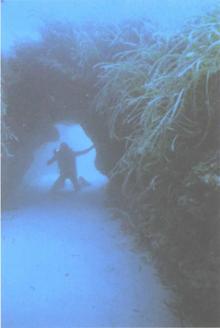 Underworld: The Mysterious Origins of Civilization
Underworld: The Mysterious Origins of Civilization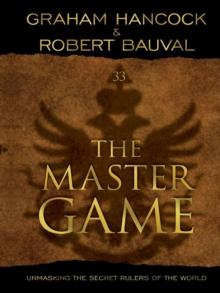 The Master Game: Unmasking the Secret Rulers of the World
The Master Game: Unmasking the Secret Rulers of the World America Before
America Before Entangled
Entangled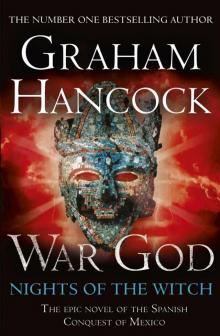 War God: Nights of the Witch
War God: Nights of the Witch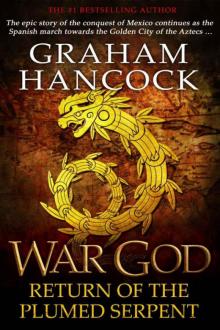 War God: Return of the Plumed Serpent
War God: Return of the Plumed Serpent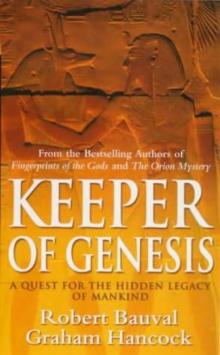 The Message of the Sphinx AKA Keeper of Genesis
The Message of the Sphinx AKA Keeper of Genesis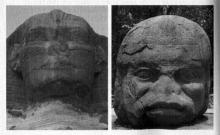 Fingerprints of the Gods
Fingerprints of the Gods The Sign and the Seal
The Sign and the Seal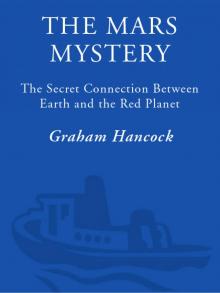 The Mars Mystery: The Secret Connection Between Earth and the Red Planet
The Mars Mystery: The Secret Connection Between Earth and the Red Planet Magicians of the Gods: The Forgotten Wisdom of Earth's Lost Civilization
Magicians of the Gods: The Forgotten Wisdom of Earth's Lost Civilization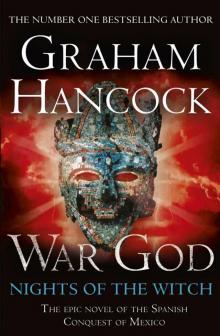 War God
War God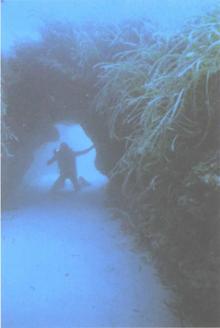 Underworld
Underworld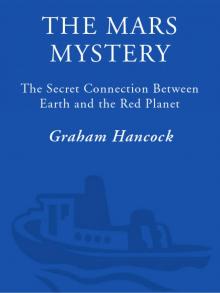 The Mars Mystery
The Mars Mystery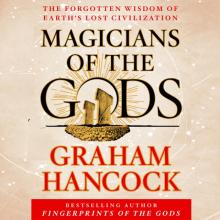 Magicians of the Gods
Magicians of the Gods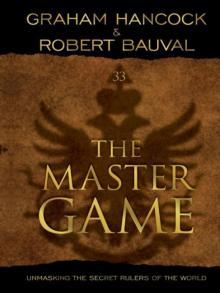 The Master Game
The Master Game